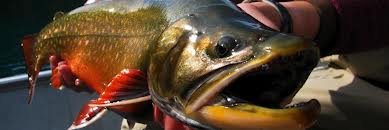afishinado
Moderator
Staff member
troutbert wrote:
There are many historical references of 20 inch brookies in PA, MD, WV. And these were in freestone streams.
How big they got in limestoners like the Letort or Big Spring or Little Juniata, nobody knows.
The limestone valleys were settled much earlier than the big freestone drainages.
I've never seen any record of how big the trout were in those limestone streams when the first settlers arrived. I think those early settlers just caught the fish and ate them, and never thought it was something worth writing about. It wasn't sport fishing, it was just putting food on the table.
But if brookies reached 20 inches in the freestone drainages, it's likely they got bigger than that in the limestoners.
So the genetics have changed?!?
The question is, again: Big browns and rainbows regularly grow to 20+++ inches in Big Spring. Not brookies. Why not in such a fertile stream?






